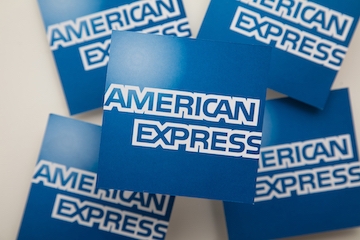American Express announced last month that the number of merchants accepting its card is roughly the same as Visa and Mastercard. Given that American Express has a reputation for being prohibitively expensive for merchants, achieving parity with Visa and Mastercard is surprising.
In this post, I’ll explain how American Express’s business model differs from Visa and Mastercard’s. I’ll discuss how that model, despite being highly profitable, caused it to fall behind. Finally, I’ll examine the programs that enabled Amex to achieved parity.
…achieving parity with Visa and Mastercard is surprising.
Expensive
To understand just how far behind American Express was, consider the state of credit card acceptance in 2016. In that year, the total purchase volume for Visa and Mastercard transactions was approximately three times greater than American Express, according to The Nilson Report, 2017. The average merchant fee for Visa and Mastercard was about a quarter of a percent less expensive than Amex.
In other words, in 2016 merchants paid a premium of 24 basis points, on average, to receive a lot less purchase volume.
| 2016 Merchant Card Volume and Fees | ||
|---|---|---|
| Type | Purchase Volume (Billions) | Merchant Fee, Average |
| Visa and Mastercard Credit | $2,242.02 | 2.12% |
| American Express | $695.44 | 2.36% |
Open Loop vs. Closed
Visa and Mastercard operate in an open-loop system. They are responsible for processing transactions but not for issuing credit, which is the responsibility of the banks and financial institutions that issue the cards.
American Express operates in a closed-loop: It issues credit and processes its own transactions without the backing of large financial institutions.
Amex earns interest from the money that flows through its system — more money equals more interest. Visa and Mastercard, on the other hand, do not earn interest; the issuing banks do. The bulk of Visa’s and Mastercard’s income comes from transaction fees, called “interchange.” Thus Visa and Mastercard are more interested in the number of transactions, not interest.
To be sure, Amex is also interested in transactions. To make up for lower purchase volume, and to generate revenue even when their cardholders paid their bills on time (avoiding interest charges), Amex charged higher fees to merchants.
So, if Amex’s fees were much higher and its total volume much lower, why would any merchant accept American Express cards?
The answer is simple: Merchants tend to view American Express cardholders as more affluent and bigger spenders. The data seems to support this reputation. Recent Forbes and Nilson reports claim that Amex cardholders spend three times more than non-Amex holders, and the average transaction amount is close to two times larger.
Thus, to attract more affluent customers, some merchants are willing to pay higher processing fees. (Merchants that don’t cater to affluent customers are presumably less interested.)
Why Parity?
It’s clear how American Express maintained a profitable business while falling far behind Mastercard and Visa in terms of merchant acceptance. It didn’t much bother Amex as recently as 2016. Its high fees and closed-loop credit and processing network were major profit centers.
So, what happened? Why did American Express become concerned with parity?
In the last few years, Visa and Mastercard issuers started to create credit card products aimed at American Express’s more affluent cardholders. Issuers offered rewards, generous cash-back schemes, travel points, exclusive offers, and various other loyalty programs. Industry giants set their sights on Amex’s profitable market share.
Visa and Mastercard issuers started to create credit card products that were aimed at American Express’s more affluent cardholders.
Suddenly, merchant-acceptance rates and merchant fees became a priority for American Express.
OptBlue
American Express recently began paying merchants to accept its cards, according to media reports, which claimed the payments reached $450,000 per merchant. But Amex admits paying only sign-up incentives and only to 133 merchants since 2018. Amex claims the incentives were around $10,000 each.
But American Express’s biggest factor in achieving parity was its OptBlue program. Started in 2014, OptBlue changed the way merchants interact with American Express.
Before OptBlue, merchants wanting to accept American Express had to open a separate merchant account from Amex and dedicated solely to Amex transactions. Not only were Amex’s fees higher, but the paperwork, logistics, accounting, and reconciliation were too much for many businesses.
With OptBlue, however, merchants could instruct their existing payment processors to settle OptBlue funds to the same merchant account as Visa, Mastercard, and Discover. Deposits to this unified merchant account arrive in the same manner and on the same schedule. And there are no longer reconciliation and accounting nightmares because OptBlue payment processors can issue unified statements for all the card brands.
Lower Fees
Moreover, payment processors that support OptBlue can negotiate volume discounts directly with American Express, thereby allowing the processors to pass the discounts to their merchants. Instead of Amex arbitrarily charging higher transaction fees, many merchants began to benefit from pricing similar to the less expensive Mastercard and Visa fees.
Data extracted from a 2018 Nilson Report shows that the average merchant fees for Visa and Mastercard were 2.26 percent and 2.3 percent for American Express.
Amex’s considers its OptBlue program as a success. It achieved its goal of bringing American Express acceptance equal to Visa and Mastercard.







